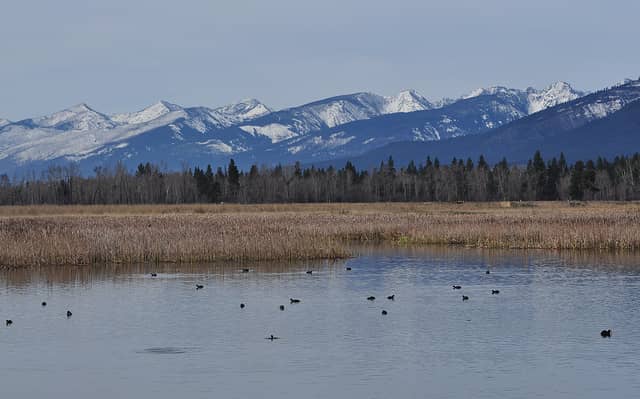National Wildlife Refuge Week Highlights Importance of Refuges to Conservation and Sportsmen
Ducks Unlimited 10.19.12

The importance of America’s wildlife refuge system to conservation and wildlife habitat is in the spotlight as part of National Wildlife Refuge Week, Oct. 14-20.
“Every state has at least one national wildlife refuge,” said Paul Schmidt, DU’s chief conservation officer. “Ducks Unlimited has worked with refuges across the country to ensure the restoration and conservation of waterfowl habitat. In turn, DU projects have helped preserve the unparalleled recreation opportunities offered by refuges, including hunting, fishing and wildlife viewing.”
Sales of the Federal Duck Stamp, which has not increased in price since 1991, generate approximately $25 million a year to purchase or lease wetlands habitat in the National Wildlife Refuge (NWR) system. Duck Stamp funding each year is equivalent to approximately 5 percent of the total refuge budget ($485 million). Hunters 16 years of age and older must buy a Duck Stamp to hunt migratory waterfowl, and all Duck Stamp purchasers gain free admission to refuges.
At the time of the last Duck Stamp price increase, gasoline was still selling for $1 a gallon. As with the price of gas, the price of land has continued to increase while the purchasing power of the Duck Stamp has not kept pace with inflation. Ducks Unlimited continues to work with the Senate to pass a bill to allow the price of the Duck Stamp to be raised to $25 for five years, reflecting the willingness of sportsmen and women to reach into their own pockets to support conservation. DU encourages members to contact their Senators to ask for support in increasing the price of the Duck Stamp (S.2156).
DU partners with the U.S. Fish and Wildlife Service to enhance habitat conservation on many NWRs. Examples of DU conservation projects on wildlife refuges include:
J. Clark Salyer NWR – DU completed a structure at this NWR in north-central North Dakota to replace dams that eroded over time. The box culverts improved water-level management on the 350-acre Rubble Masonry Wetland Unit.
Lee Metcalf NWR – This project involved several conservation partners, including the U.S. Fish and Wildlife Service, the North American Wetlands Conservation Council, Montana Fish Wildlife and Parks, the Teller Refuge and other local groups to restore 65 acres of wetland habitat in three basins.
Mattamuskeet NWR – DU’s involvement as a conservation partner for North Carolina’s Mattamuskeet NWR dates back to the early 1990s. It is one of the most important refuges for migrating and wintering waterfowl in the Atlantic Flyway. Recent projects have included the installation of water control structures to facilitate water-level management.
Ducks Unlimited supported Sen. Chris Coons’ (DE) September resolution to recognize the National Wildlife Refuge System this week. Since 1995, many refuges have celebrated in early October, and Congress has officially recognized National Wildlife Refuge Week the last three years. To find refuge week events in your area, visit www.fws.gov.
Since President Theodore Roosevelt introduced the first wildlife refuge, the system has grown to encompass 150 million acres in 560 refuges and 38 wetland management districts. There are 364 wildlife refuge units, including waterfowl production areas, open for hunting and fishing.

